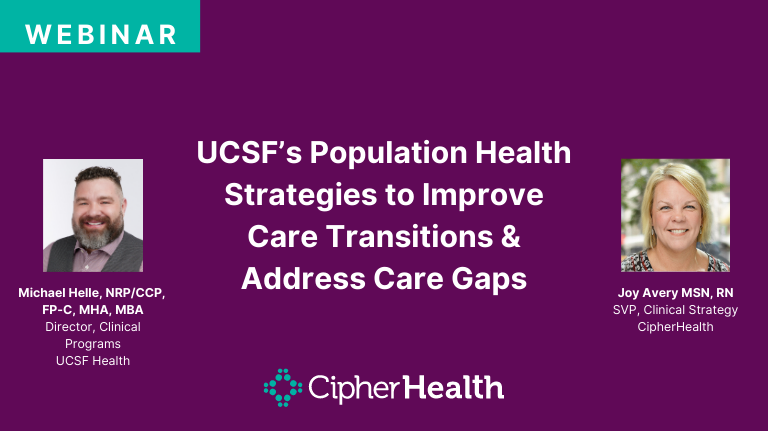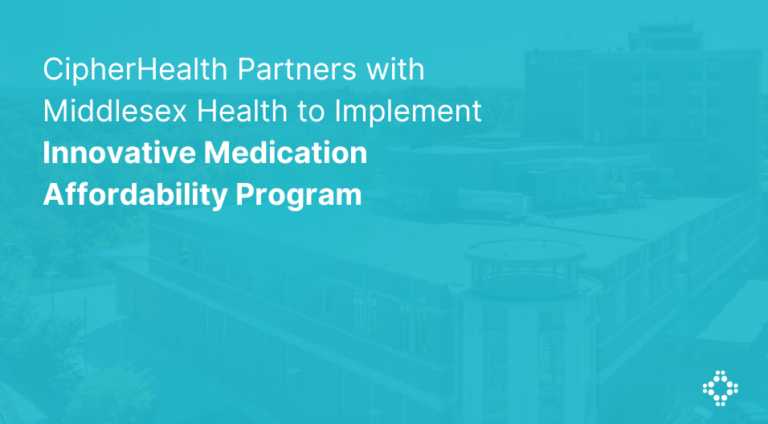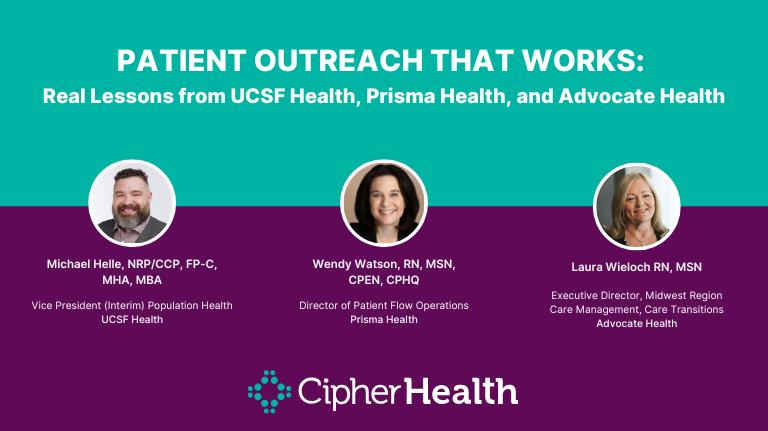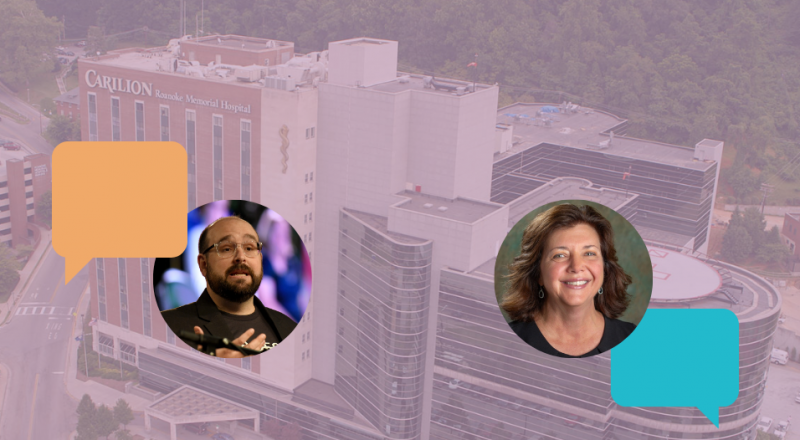CipherHealth had the pleasure of speaking with Michael Helle, NRP/CCP, FP-C, MHA, MBA, Vice President (Interim) Population Health, UCSF Health, during a recent webinar on patient outreach strategies.
UCSF is an academic medical center and part of the University of California system, based in San Francisco. About ten years ago, they launched its Population Health department and began consolidating outreach efforts that had previously been in silos across primary care clinics and hospital units.
Partnering with CipherHeath, the team now supports the entire health system through three key programs.
“Since implementing this technology, we have expanded our capacity almost by eightfold,” Helle said. “We’ve been able to outreach to so many more patients… and we have a one-touch system to get them where they need to go in a quick manner.”
Care Transitions Outreach
The first is the Care Transitions Outreach Program. Every patient discharged home from a UCSF hospital receives a call from a nurse-led team, which includes one social worker. This is an important, clinical touchpoint, built on nurse-driven triage protocols and service-line-specific scripts. The team validates common post-discharge concerns for each specialty, then guides patients through next steps.
And if a patient needs help beyond the team’s scope? The handoff is already built in. Medication questions get escalated to a pharmacy team through UCSF’s school of pharmacy. Complaints or grievances go directly to patient experience.
Making those discharge calls used to be costly—around $82 each. UCSF brought that down to just $2 per call, Helle said.
Longitudinal Monitoring
For patients in value-based programs—ACOs, APMs, Medicare Advantage and Medicaid—UCSF runs a longitudinal monitoring initiative that extends across the 30 days following discharge. After the first nurse call, patients receive weekly outreach to proactively surface issues.
“After that first call goes out by the discharge phone call team, usually week one and week two, patients do pretty well,” Helle said. “But we start to see by week three and week four that the issue rate starts to go up.”
The team helps bridge inpatient and outpatient care—handling referrals, pre-authorizations and scheduling follow-ups. They also guide patients back to in-network providers. With a 92% reach rate and a rise in reported issues by weeks three and four, the program plays a key role in preventing readmissions.
Disease Management and Care Gap Closure
The third program is their population health, disease management and care gap closure team—including cancer screenings, hypertension outreach, pediatric and adolescent, child visits, overdue immunization and more. They use multiple CipherHealth scripts for each area.
Recently, they built depression screening protocols, with ways to escalate urgent mental health needs and connect patients with licensed social workers and RNs.
And because UCSF is an academic medical center with frequent provider turnover, they use automated outreach to verify whether patients are still receiving care and clean up provider panels.
Bundled Outreach
UCSF’s outreach is often bundled, so patients don’t receive multiple calls for multiple issues. And language access and cultural considerations are always top of mind. They offer multilingual scripts and added text messaging to improve response rates among different populations.
That commitment to equity is also baked into how the team handles unanswered calls. If a patient is over 85, doesn’t speak English, was discharged with home care or self-identifies as Black or African American and doesn’t respond to automated outreach, the team follows up manually.
Helle said, “There’s a variety of reasons why we’ve made the decision to do that specifically around what we’ve seen in data around our readmission rates.”
These strategies, in tandem with automation, have helped UCSF expand their reach, close more care gaps and intervene earlier—without adding more staff.
Here’s what’s made their outreach model work:
- Multichannel, multilingual engagement improves reach and response rates across diverse populations
- Automated outreach is less intrusive and more scalable than manual calls, but patients need to be educated so it doesn’t feel like spam
- Adaptability matters—as population health goals evolve, UCSF can launch and scale new campaigns quickly
These strategies show how UCSF’s patient outreach model can expand capacity without adding staff, lower per-call costs, and deliver timely, equitable care across diverse populations, all while preventing unnecessary readmissions.
To watch the full recording of the webinar, click here.









